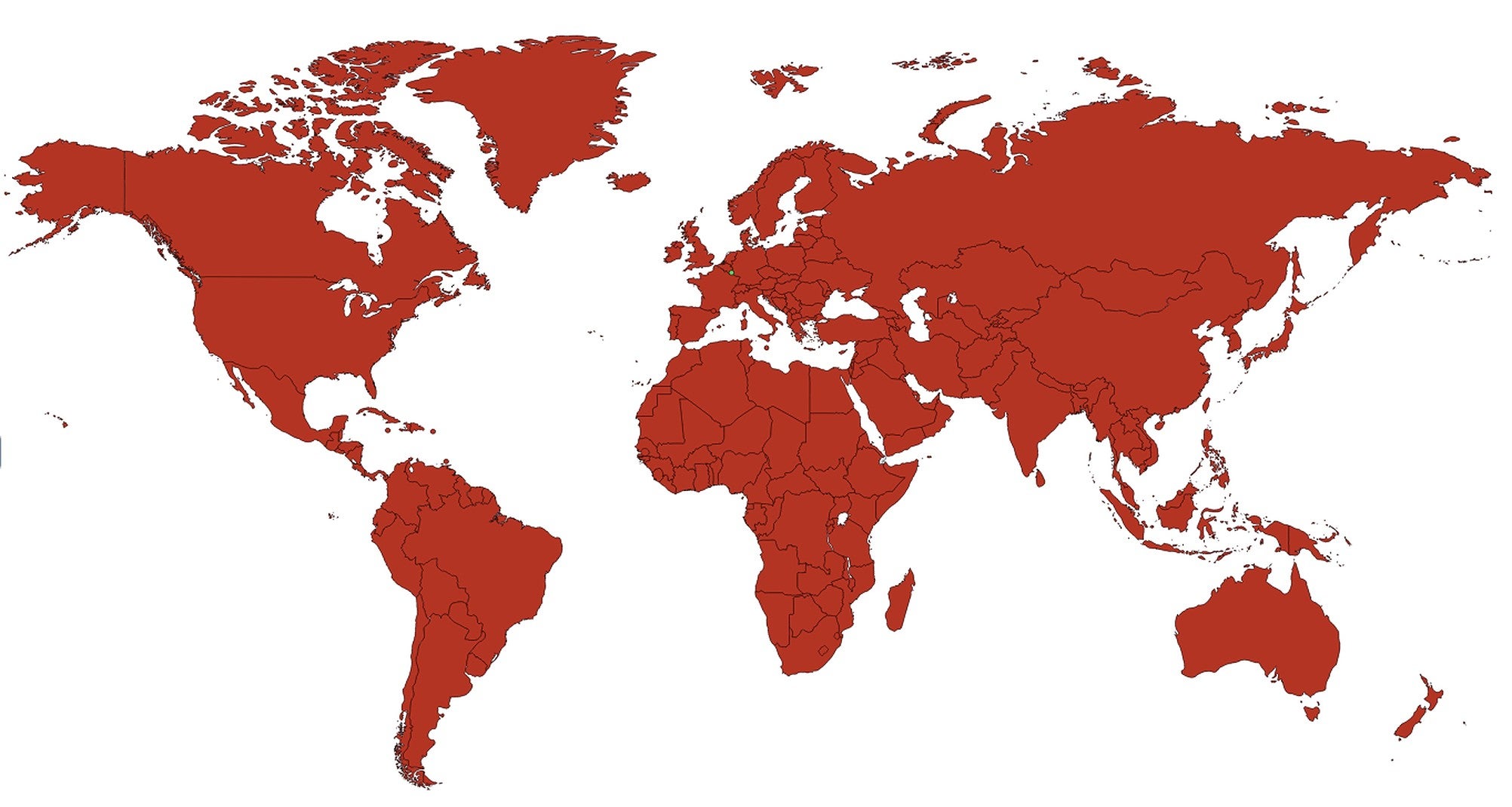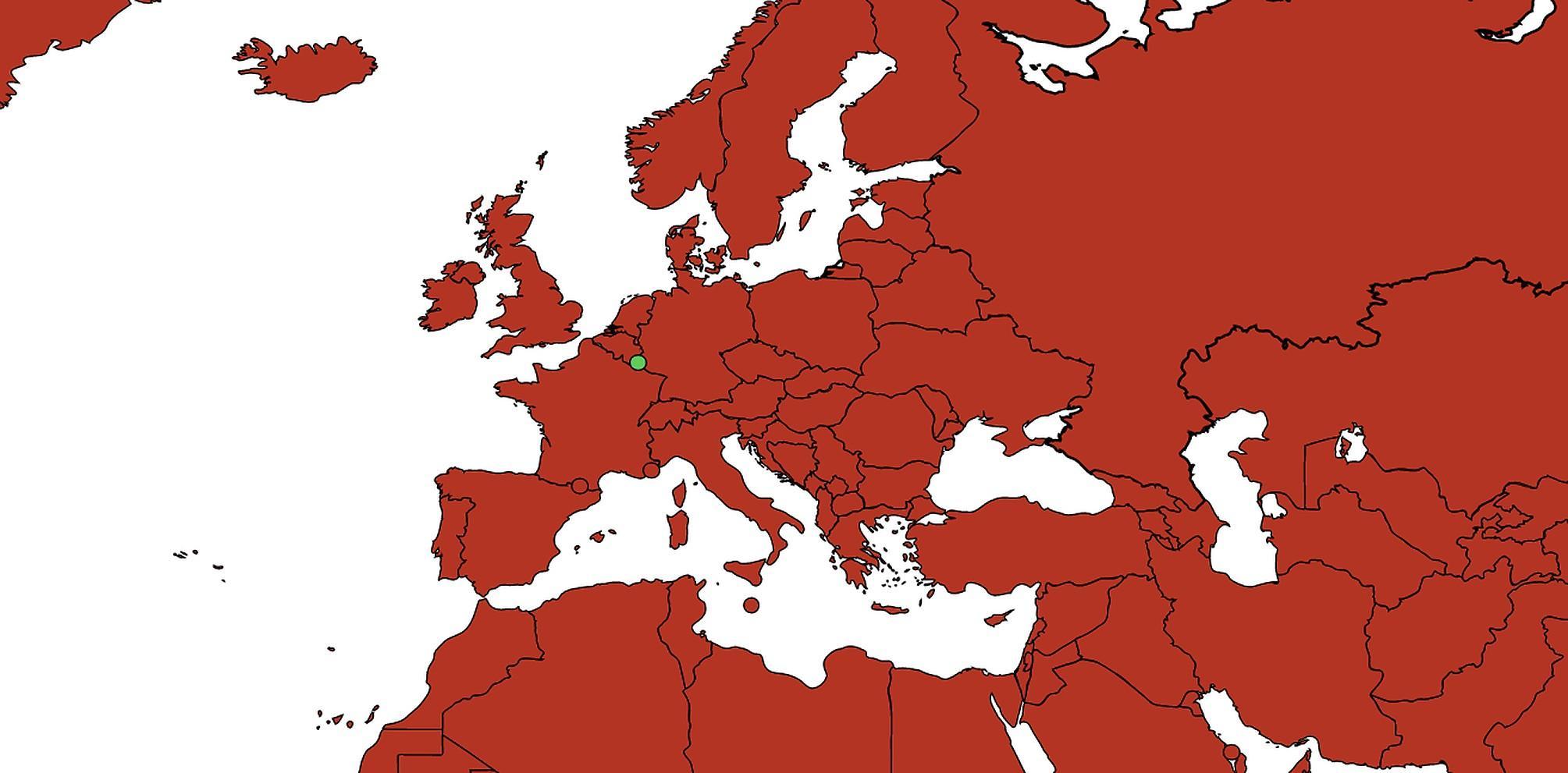CAPITALISM IS NOT IN CRISIS CAPITALISM IS THE CRISIS

1 of 15
Workers wearing protective gears spray disinfectant as a precaution against the new coronavirus at a subway station in Seoul, South Korea, Friday, Feb. 28, 2020. Japan's schools prepared to close for almost a month and entertainers, topped by K-pop superstars BTS, canceled events as a virus epidemic extended its spread through Asia into Europe and on Friday, into sub-Saharan Africa. (AP Photo/Ahn Young-joon)
NEW YORK (AP) — The coronavirus outbreak began to look more like a worldwide economic crisis Friday as anxiety about the infection emptied shops and amusement parks, canceled events, cut trade and travel and dragged already slumping financial markets even lower.
More employers told their workers to stay home, and officials locked down neighborhoods and closed schools. The wide-ranging efforts to halt the spread of the illness threatened jobs, paychecks and profits.
“This is a case where in economic terms the cure is almost worse than the disease,″ said Jacob Kirkegaard, senior fellow at the Peterson Institute for International Economics. “When you quarantine cities ... you lose economic activity that you’re not going to get back.′
The list of countries touched by the illness climbed to nearly 60 as Mexico, Belarus, Lithuania, New Zealand, Nigeria, Azerbaijan, Iceland and the Netherlands reported their first cases. More than 83,000 people worldwide have contracted the illness, with deaths topping 2,800.
China, where the outbreak began in December, has seen a slowdown in new infections and on Saturday morning reported 427 new cases over the past 24 hours along with 47 additional deaths. The city at the epicenter of the outbreak, Wuhan, accounted for the bulk of both.
New cases in mainland China have held steady at under 500 for past four days, with almost all of them in Wuhan and its surrounding Hubei province.
With the number of discharged patients now greatly exceeding those of new arrivals, Wuhan now has more than 5,000 spare beds in 16 temporary treatment centers, Ma Xiaowei, director of the National Health Commission, told a news conference in Wuhan on Friday.
South Korea, the second hardest hit country, on Saturday morning reported 594 new cases, the highest daily jump since confirming its first patient in late January. Emerging clusters in Italy and in Iran, which has had 34 deaths and 388 cases, have led to infections of people in other countries. France and Germany were also seeing increases, with dozens of infections.
The head of the World Health Organization on Friday announced that the risk of the virus spreading worldwide was “very high,” citing the “continued increase in the number of cases and the number of affected countries.”
U.N. Secretary-General Antonio Guterres urged all governments to “do everything possible to contain the disease.”
“We know containment is possible, but the window of opportunity is narrowing,” the U.N. chief told reporters in New York.
The economic ripples have already reached around the globe.
Stock markets around the world plunged again Friday. On Wall Street, the Dow Jones index took yet another hit, closing down nearly 360 points. The index has dropped more than 14% from a recent high, making this the market’s worst week since 2008, during the global financial crisis.
The effects were just as evident in the hush that settled in over places where throngs of people ordinarily work and play and buy and sell.
“There’s almost no one coming here,” said Kim Yun-ok, who sells doughnuts and seaweed rolls at Seoul’s Gwangjang Market, where crowds were thin. “I am just hoping that the outbreak will come under control soon.”
In Asia, Tokyo Disneyland and Universal Studios Japan announced they would close, and events that were expected to attract tens of thousands of people were called off, including a concert series by the K-pop group BTS. The state-run Export-Import Bank of Korea shut down its headquarters in Seoul after a worker tested positive for the virus, telling 800 others to work from home. Japanese officials prepared to shutter all schools until early April.
In Italy — which has reported 888 cases, the most of any country outside of Asia — hotel bookings are falling, and Premier Giuseppe Conte raised the specter of recession. Shopkeepers like Flavio Gastaldi, who has sold souvenirs in Venice for three decades, wondered if they could survive the blow.
“We will return the keys to the landlords soon,” he said.
The Swiss government banned events with more than 1,000 people, while at the Cologne Cathedral in Germany, basins of holy water were emptied for fear of spreading germs.
In a report published Friday in the New England Journal of Medicine, Chinese health officials said the death rate from the illness known as COVID-19 was 1.4%, based on 1,099 patients at more than 500 hospitals throughout China.
Assuming there are many more cases with no or very mild symptoms, the rate “may be considerably less than 1%,” U.S. health officials wrote in an editorial in the journal. That would make the virus more like a severe seasonal flu than a disease similar to its genetic cousins SARS, severe acute respiratory syndrome, or MERS, Middle East respiratory syndrome.
Given the ease of spread, however, the virus could gain footholds around the world and many could die.
“It’s not cholera or the black plague,” said Simone Venturini, the city councilor for economic development in Venice, Italy, where tourism already hurt by historic flooding last year has sunk with news of virus cases. “The damage that worries us even more is the damage to the economy.”
Europe’s economy is already teetering on the edge of recession. A measure of business sentiment in Germany fell sharply last week, suggesting that some companies could postpone investment and expansion plans. China is a huge export market for German manufacturers.
In the U.S., online retail giant Amazon said Friday that it has asked all of its 800,000 employees to postpone any non-essential travel, both within the country and internationally.
The chairman of the Federal Reserve, Jerome Powell, said that the U.S. economy remains strong and that policymakers would “use our tools” to support it if necessary.
Larry Kudlow, the top economic advisor to President Donald Trump, told reporters that the selloff in financial markets may be an overreaction to an epidemic with uncertain long-term effects.
“We don’t see any evidence of major supply chain disruptions. I’m not trying to say nothing’s happening. I think there will be impacts, but to be honest with you, at the moment, I don’t see much,” Kudlow said.
The pain was already taking hold in places like Bangkok, where merchants at the Platinum Fashion Mall staged a flash mob, shouting “Reduce the rent!” and holding signs that said “Tourists don’t come, shops suffer.”
Tourist arrivals in Thailand are down 50% compared with a year ago, according Capital Economics, a consulting firm.
Kanya Yontararak, a clothing store owner, said her sales have sunk as low as 1,000 baht ($32) some days, making it a struggle to pay back a loan for her lease. The situation is more severe than the floods and political crises her store has braved in the past.
“Coronavirus is the worst situation they have ever seen,” she said of her fellow merchants.
Economists have forecast global growth will slip to 2.4% this year, the slowest since the Great Recession in 2009, and down from earlier expectations closer to 3%. For the United States, estimates are falling to as low as 1.7% growth this year, down from 2.3% in 2019.
But if COVID-19 becomes a global pandemic, economists expect the impact could be much worse, with the U.S. and other global economies falling into recession.
“If we start to see more cases in the United States, if we start to see people not traveling domestically, if we start to see people stay home from work and from stores, then I think the hit is going to get substantially worse,” said Gus Faucher, an economist at PNC Financial.
After the WHO raised its alert level, the agency’s Emergencies Program Director Michael Ryan called the situation “a reality check for every government on the planet.”
“Wake up, get ready,” he said. “This virus may be on its way.”
___
Associated Press writers Deb Riechmann in Washington, Joseph Pisani and Edith M. Lederer in New York, Carla K. Johnson in Seattle, Matt Sedensky and Preeyapa Khunsong in Bangkok, Hyung-jin Kim and Tong-hyung Kim in Seoul, South Korea, Foster Klug and Mari Yamaguchi in Tokyo, Renata Brito and Giada Zampano in Venice, Italy, Frances D’Emilio in Rome, Angela Charlton in Paris and Frank Jordans in Berlin contributed to this report.

















